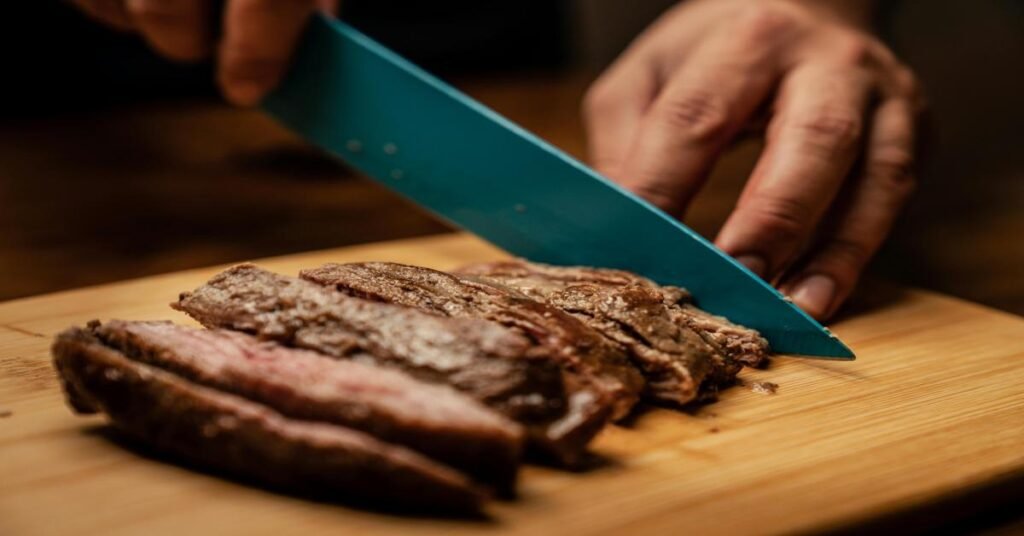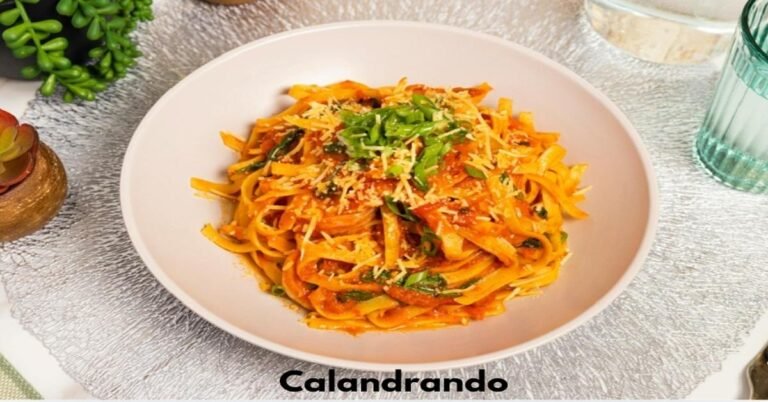Sicilian cuisine is a blend of cultures, history, and unique flavors, and one dish that truly embodies this is Calandrando. More than just a meal, Calandrando carries the essence of Sicily through simple ingredients that come together in a flavorful, hearty dish. In this article, we’ll explore Calandrando’s origins, ingredients, and how this dish continues to be a symbol of Sicilian culture, all while adapting to modern times.
What is Calandrando?
Calandrando is a traditional Sicilian dish that combines fresh pasta, a robust tomato base, savory meat, and fragrant herbs. Its origins date back centuries, and it reflects Sicily’s agrarian past, where locals used accessible ingredients to create hearty meals. Despite its humble beginnings, Calandrando has become a celebrated dish both in Sicilian homes and high-end restaurants, capturing the island’s culinary spirit.
Today, Calandrando is cherished not just for its flavors but also for its role in bringing people together, often enjoyed at family gatherings and celebrations. It’s more than food; it’s an experience that connects people with Sicily’s traditions and culture.
Key Ingredients of Calandrando
Each ingredient in Calandrando has its purpose, creating a depth of flavor that’s complex yet comforting. Here’s what makes Calandrando special:
Durum Wheat Semolina
Sicilian durum wheat semolina is the backbone of the pasta in this dish. Known for its golden color and slightly nutty flavor, durum wheat semolina gives the pasta a firm texture that holds up well with thick sauces. It also adds a distinct richness to each bite.
Sun-Ripened Tomatoes
Fresh, local tomatoes bring a perfect balance of sweetness and acidity. Slowly cooked into a thick sauce, these tomatoes are essential to creating Calandrando’s signature flavor. Sicilian tomatoes are unique in their taste, thanks to the region’s rich volcanic soil and abundant sunshine.
Locally Sourced Meat
Traditionally, cuts of pork or beef are used. Slow-cooked for hours, the meat becomes tender, imparting a savory richness to the tomato base. In some modern takes, seafood or plant-based proteins are used, but the classic remains deeply rooted in using locally sourced meat.
Herbs and Aromatics
Fresh herbs like basil, oregano, and parsley are essential in Calandrando, enhancing the flavors without overwhelming them. A hint of garlic and chili adds warmth, creating a nuanced taste profile that feels vibrant and complex.
How to Make Calandrando: A Step-by-Step Guide
Cooking Calandrando is a slow and deliberate process. Each step adds layers of flavor, requiring time and patience to achieve the perfect result. Here’s a step-by-step guide to making this Sicilian classic:
Prepare the Fresh Pasta

Begin by combining durum wheat semolina flour and water to form a dough. Knead until smooth, then let it rest. After resting, roll the dough out thinly and cut it into ribbon-like strips. Fresh pasta absorbs the sauce beautifully, giving each bite a rich, cohesive flavor.
Create the Tomato Base

Heat olive oil in a large pan, add finely chopped onions, and cook until they become translucent. Add minced garlic, followed by chopped tomatoes, and cook them down into a thick sauce. Season with salt, pepper, and a splash of white wine for extra depth.
Simmer the Meat

Add the meat to the sauce and let it simmer slowly. Cooking the meat in the tomato sauce allows it to absorb the flavors while releasing its juices, creating a richly layered sauce. This step is all about patience, as the slow simmering brings out the best in each ingredient.
Cook and Combine the Pasta

Boil the fresh pasta until al dente, then toss it in the sauce. If the sauce is too thick, a little pasta water can be added to help coat the pasta evenly. This final step brings all the flavors together in one satisfying, hearty dish.
Garnish and Serve
Garnish with freshly chopped parsley and a drizzle of olive oil. For an authentic Sicilian finish, add a squeeze of lemon to brighten the flavors, or sprinkle a bit of grated cheese to add a hint of richness.
Why Calandrando is More Than a Dish
Calandrando’s significance goes beyond its ingredients. In Sicily, this dish has a cultural role, often prepared during celebrations and family gatherings. It represents warmth, community, and a connection to one’s roots. For many, Calandrando is a symbol of resilience and hospitality, embodying the spirit of Sicily in each plate.
Sharing Calandrando at the table is about honoring Sicilian heritage and passing down traditions. Each family has its way of making it, with unique touches that reflect their history and local ingredients. This is why Calandrando isn’t just a recipe but a way of keeping cultural memories alive.
Modern Adaptations
While traditionalists hold firmly to the classic recipe, modern chefs have added their own twists to Calandrando, incorporating ingredients like saffron for extra warmth or seafood for a coastal twist. In some interpretations, plant-based options have been introduced, allowing more people to enjoy this Sicilian classic. These adaptations keep Calandrando relevant and exciting, appealing to modern pilates while honoring its roots.
Pairing and Presentation
For an authentic Sicilian experience, consider serving Calandrando with a crisp Sicilian white wine like Grillo or a dry Chardonnay. These wines complement the rich flavors of the dish, enhancing the dining experience. Presentation also plays a role—garnish with fresh herbs and serve in rustic dishes to capture the spirit of Sicily. This thoughtful approach to plating elevates Calandrando from a home-cooked meal to a feast.
Embracing Calandrando’s Legacy
Calandrando is more than just a delicious meal. It’s a celebration of Sicily’s history, its people, and the island’s rich culinary traditions. Each bite offers a glimpse into the culture and lifestyle that Sicilians cherish. Whether enjoyed traditionally or with a modern twist, Calandrando invites us to slow down, savor each bite, and appreciate the heritage that brings this dish to life.
So, next time you’re looking for a meal that’s flavorful, comforting, and culturally rich, try Calandrando. Whether you’re a seasoned cook or new to Sicilian cuisine, this dish has something to offer everyone. Embrace its simplicity, honor its tradition, and bring a piece of Sicily into your kitchen.
